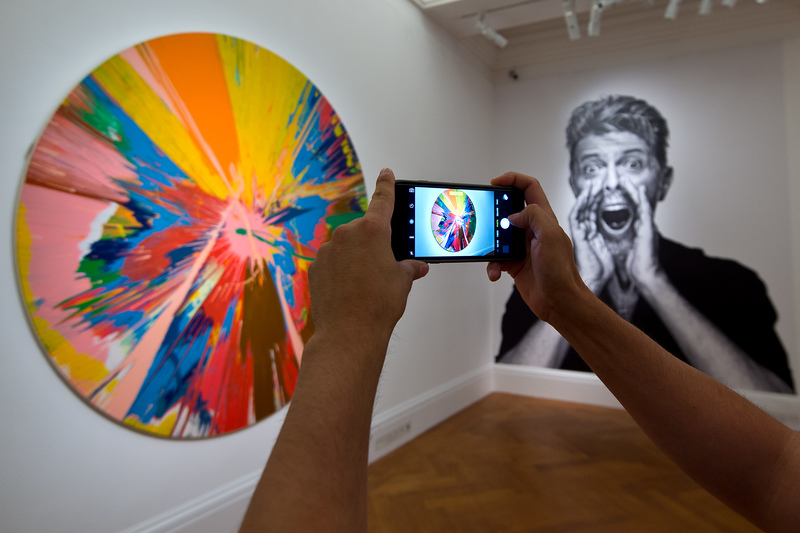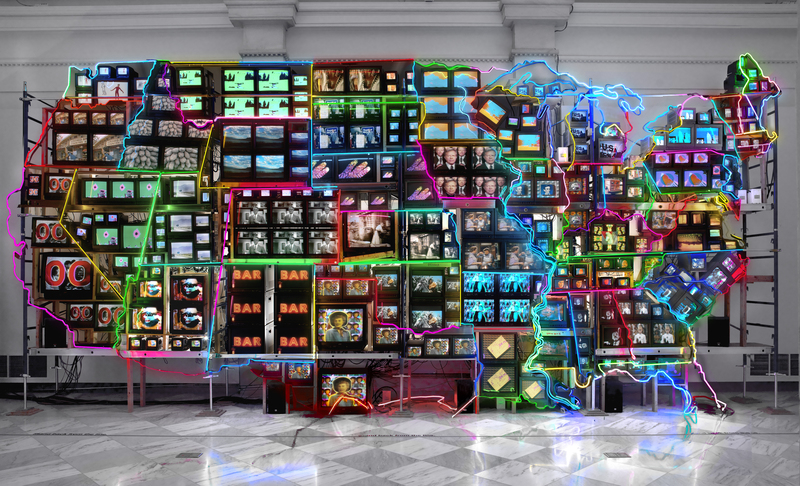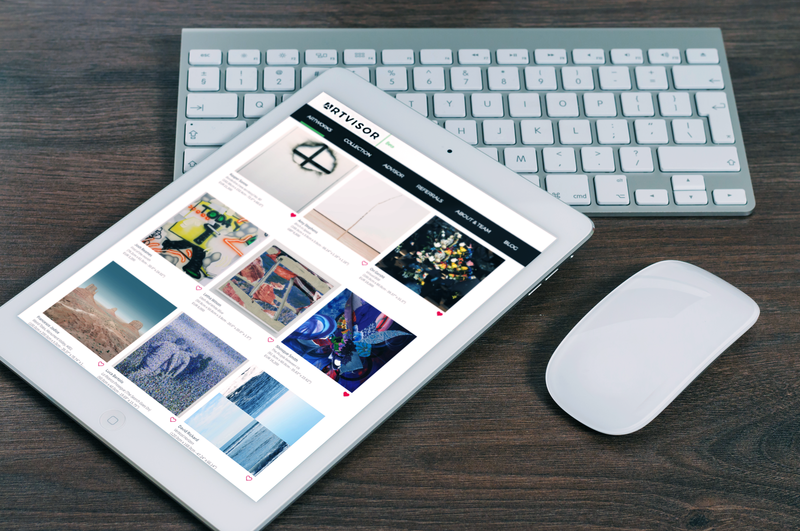Click & Buy – The future of the art market?
Some old fashion art dealers have recently been shocked by seeing an “Add to basket” button appear on the website of some of their competitors, next to an artwork’s image. What has the world come to!, they must have thought.
Despite all our financial interactions with it, buying everything from clothing to cars to stocks, we are just now discovering the real scope of what the internet is and means on a wider level. One power it has is the ability to render distance irrelevant. Save for the smell of paint, the information needed is all there online: images, condition reports, provenance info and artist’s CV; with this in mind a collector is in the best position ever to make an informed buying decision remotely. Particularly when buying for investment, this streamlines the process considerably and makes a big saving on air miles and shoe leather.
 Photo: Damien Hirst, Beautiful, Shattering, Slashing, Violent, Pinky, Hacking, Sphincter Painting (1995). Bowie/Collector Sotheby’s sale, London, November 2016.
Photo: Damien Hirst, Beautiful, Shattering, Slashing, Violent, Pinky, Hacking, Sphincter Painting (1995). Bowie/Collector Sotheby’s sale, London, November 2016.
© 2016 Newsweek LTD.
Art-lovers are increasingly using the internet to self-inform and build an independent view of their interests, enabling them to make purchases directly online. The frequency of these purchases has risen steadily over time and though sale values are relatively low, under £20,000 is usual, they are increasing in scope, with big-ticket sales becoming much more common. New platforms are enabling new collectors to engage more fully with the market. This is good news for the emerging galleries and their artists, whose work is seen as affordable and innovative, and whose fans are more likely to be young themselves and therefore more comfortable with online interaction and buying.
 Photo: Nam June Paik, Electronic Superhighway: Continental U.S., Alaska, Hawaii (detail), 1995. © Nam June Paik Estate.
Photo: Nam June Paik, Electronic Superhighway: Continental U.S., Alaska, Hawaii (detail), 1995. © Nam June Paik Estate.
One aim of many online platforms is the development of new collectors, growing their buying power and therefore securing the future of the art market. There is a concerted effort to educate among the online community; viewers can enjoy artist biographies, strong editorial content, art historical context, information on museum collecting, legal battles, video interviews with artists; the experience online is so much richer than most have in a gallery, information-wise. Galleries are sometimes too stretched to dedicate enough time to gallery visitors; unless they’re a known collector, a conversation could subtract time to more practical and vital tasks such as selling or admin. Galleries are no longer the only place to go if you want to discover an artist in full; they are no longer the sole gatekeepers.
Platforms such as Artvisor allow sophisticated newcomers to the art market to feel guided throughout the process of discovering and buying art, without the often dispersive and overwhelming feeling of art fairs, and the sometimes intimidating atmosphere of galleries and auction houses. Artworks are selected at source based on quality and curriculum of the artist, and each user is assigned to an art advisor that can help understand the art and suggest further artworks.
 Photo: Artvisor’s user interface. © Artvisor ® 2016
Photo: Artvisor’s user interface. © Artvisor ® 2016
Of course, many people still want to be able to look at art in the flesh before buying, and being in the presence of a work is sometimes what triggers the desire to own it. But discussion and background is key, and online platforms are offering many new paths into the art world, shaping a new generation of collectors.
Lee, contributor
Lee is an independent art advisor active in the UK, US and Hong Kong. He has worked in the arts for fifteen years, both in institutions (the Tate) and as Director at commercial art galleries in London.

